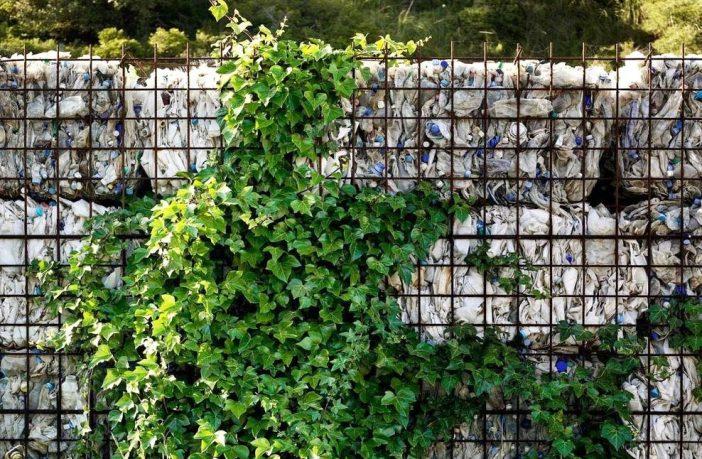Some construction and demolition waste (C&D waste) can be recycled when they are not harmful to humans or the environment. In such cases, the material needs to be sorted and shredded before being given new purposes.
In addition to construction waste, other ordinary materials that are not directly related to building, furniture, or urban facilities, such as tires or disposable packaging, have also been recycled and incorporated into this new environment with very satisfying results.
Here are some of the several ranges in which recycled materials can be applied in architecture and cities in 8 practical examples:
Walls
As an alternative to conventional walls, bricks made from recycled rubber and plastics can show considerable cost reduction in construction, and can also save time if designed to be assembled by interlocking. Recycled bricks have been used, for example, in social housing and long-term emergency shelters.
Paint
A great example of recycling materials for producing paint is by using expanded polystyrene (EPS or Styrofoam, as it is popularly known). Mainly used in buildings for soundproofing, residual EPS has been used as a base for paints developed by the company Idea-Tec. To learn more about this process, check this article published by ArchDaily.
Structure
It is possible to recycle C&D waste to create raw material for new structures, such as concrete. During the recycling process, the material undergoes a crushing stage so that the fragments can be classified according to size and then reused. The recycled concrete particles can be used as coarse aggregate in new mixtures, or as gabion filling.
Roofing
Some of the main concerns in designing and building a roof are insulation, resistance, and durability. Waterproofing slabs with recycled tires proves that it is possible to meet the demands of roofing by using recycled material, plus it is also very cost-effective. Tetra Pak tiles and recycled plastic tiles are some other options.
Pavilions and temporary facilities
.jpg?1594127477)
Recycling has been addressed in several different ways at international events, exhibitions, and urban interventions. In this context, pavilions and temporary installations can be regarded as “samples” of countless recycled materials and the many possibilities and ways of applying them, through research and experimentation.
Street Furniture
Recycling materials to be used on street furniture can engage the population in waste sorting and promote their participation in urban projects. Zero Waste Lab, for example, is a research initiative that allows people to transform plastic waste into urban furniture through 3D printing. According to the project, “citizens are free to shape their designs and create custom pieces that are best suited to their needs.”
Playgrounds
Rubberized or soft materials are ideal for playgrounds and parks. Therefore, recycling tires and other rubberized materials can be a great solution for these areas. Apart from being used for paving, recycled and repurposed materials also become ludic in playgrounds, stimulating children’s imagination and creativity towards the new possible functions for those materials.
Paving
Testing with recycled packaging, bottles, and other products made from plastic has demonstrated their suitability for paving streets and bike paths. It takes high temperatures to melt the materials in conventional asphalt paving, whereas using recycled plastic, these temperatures are lower resulting in less energy consumption. Learn more about the benefits of recycled plastic for paving here.
Written by Susanna Moreira | Translated by Tarsila Duduc
This article was first published in Arch Daily and is republished with permission.



















.jpg?1594127432)


